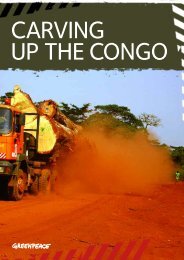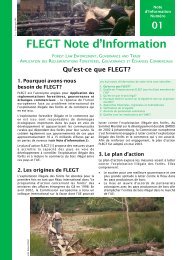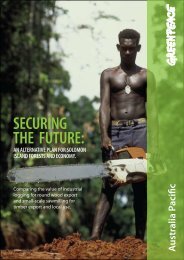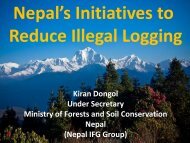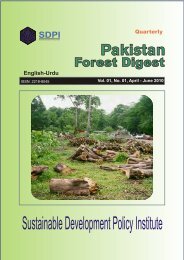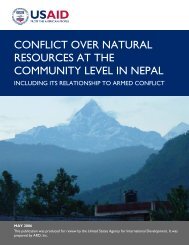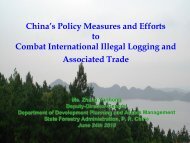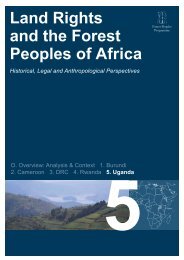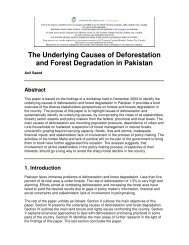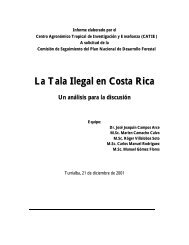CHAINSAW MILLING IN GHANA: CONTExT, DRIVERS ... - Fornis.net
CHAINSAW MILLING IN GHANA: CONTExT, DRIVERS ... - Fornis.net
CHAINSAW MILLING IN GHANA: CONTExT, DRIVERS ... - Fornis.net
- No tags were found...
You also want an ePaper? Increase the reach of your titles
YUMPU automatically turns print PDFs into web optimized ePapers that Google loves.
Chainsaw milling in Ghana: context, drivers and impactsTable 3 (continued): Definition of legal timber in GhanaprocessingoperationsAct 571Act 571, NRCD243, Cap 110Act 571, NRCD243, Cap 110Timber companies require valid registration with the FC.Mills must follow safety and industrial processing standardsand trade guidelines during their processing operations.Mills cannot process chainsawn lumber. Logs to beprocessed must be covered by the necessary documentsand certificates such as conveyance certificates.markets andexportAct 571, SMCD128, NRCD 243,NRCD 273, LI1649Timber to be exported must be marked with the logger’svalid property mark and markings on logs or timber cannotbe defaced.All dealers (including exporters) require a valid registrationlicence to market timber.Export permits must be available during pre-shipmentinspections and examination of timber and wood products.fiscal regime Acts 124, 493, All tax obligations of a TUC holder must be fully met.547, NRCD 273,Cap 136, LoggingManualLoggers cannot be in arrears with respect to payment offees and charges.Loggers must pay all stumpage fees with respect toharvested trees.Source: Adapted from Agyeman, Oduro and Gyan 2007By 1994 both timber companies and chainsaw operators carried out excessive andoften uncontrolled felling in concession areas, making the regulations practicallyirrelevant. The situation was compounded by the various regulations issued separatelyby FSD and DAs. Chainsaw operators, DAs, farmers, and land-owners tookadvantage of the confusion and carried out much unmonitored felling. Speculativefelling and trade malpractice were widespread, including illegal trading in propertymarks and unauthorised subletting of concessions to unlicensed timber operators.The timber industry’s failure to pay royalties and other statutory fees for trees felled inboth reserve and off-reserve forests also reached serious proportions. There appearedto be an almost complete lack of control over timber harvesting in the off-reserveareas, where illegal production had risen to about 80% of total timber production(Kotey et al. 1998).2.2 Policy responsesIn response to these problems, a national working group was set up in 1994 torecommend strategies to control illegal felling outside forest reserves. It consisted ofthe National Chainsawyers Association, timber companies, local timber task forces(FSD, concession holders, district assemblypersons, villages and military personnel),District Chief Executives, FSD District Forest Managers, stool chiefs and traditionalauthorities, farmers and communities and the Forestry Ministry (now the Ministryof Lands and Natural Resources). A number of interim measures were consequentlyadopted, one of which was the Interim Felling Procedures of 1995.8




